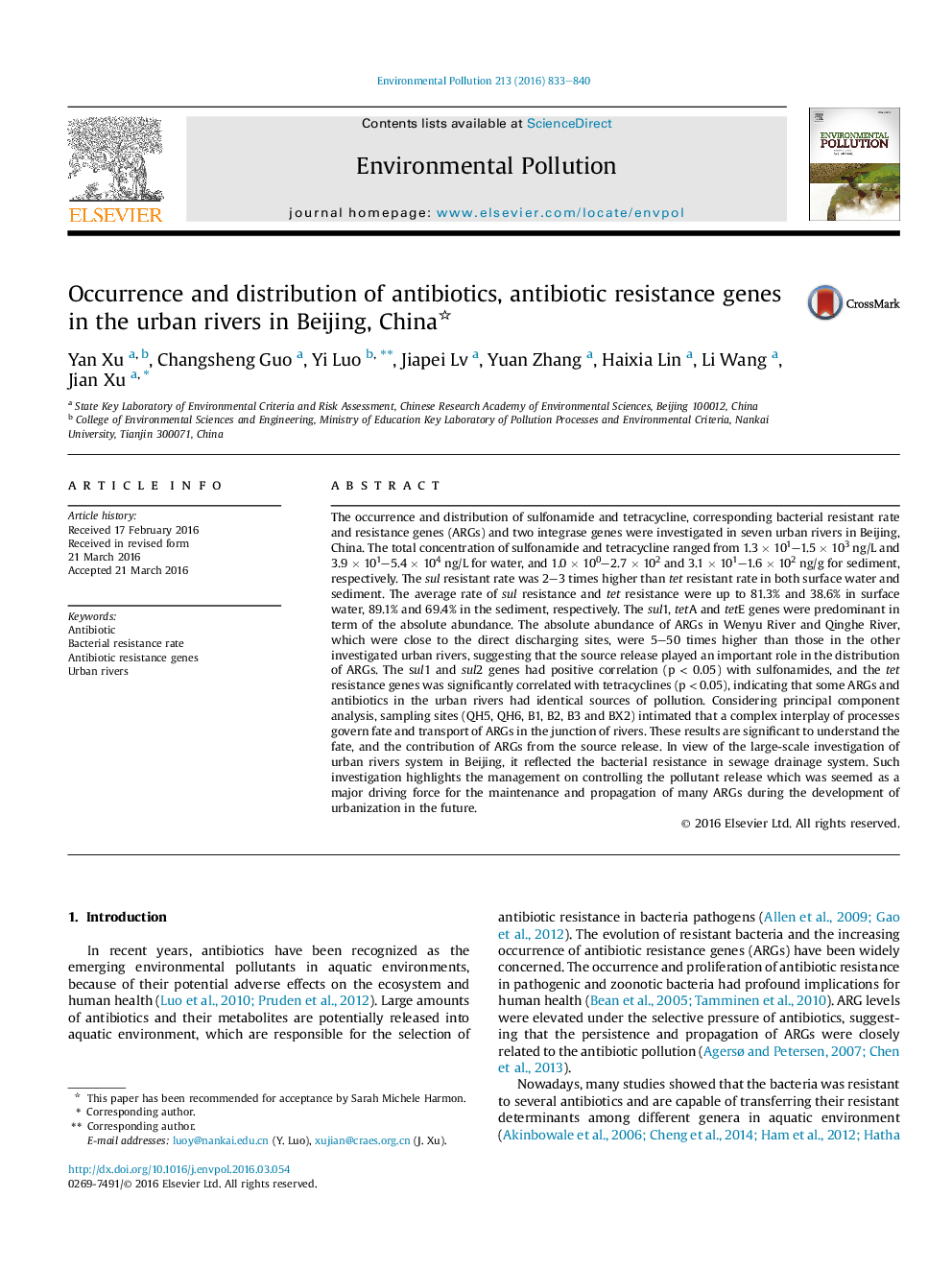| Article ID | Journal | Published Year | Pages | File Type |
|---|---|---|---|---|
| 6315027 | Environmental Pollution | 2016 | 8 Pages |
Abstract
The occurrence and distribution of sulfonamide and tetracycline, corresponding bacterial resistant rate and resistance genes (ARGs) and two integrase genes were investigated in seven urban rivers in Beijing, China. The total concentration of sulfonamide and tetracycline ranged from 1.3 Ã 101-1.5 Ã 103 ng/L and 3.9 Ã 101-5.4 Ã 104 ng/L for water, and 1.0 Ã 100-2.7 Ã 102 and 3.1 Ã 101-1.6 Ã 102 ng/g for sediment, respectively. The sul resistant rate was 2-3 times higher than tet resistant rate in both surface water and sediment. The average rate of sul resistance and tet resistance were up to 81.3% and 38.6% in surface water, 89.1% and 69.4% in the sediment, respectively. The sul1, tetA and tetE genes were predominant in term of the absolute abundance. The absolute abundance of ARGs in Wenyu River and Qinghe River, which were close to the direct discharging sites, were 5-50 times higher than those in the other investigated urban rivers, suggesting that the source release played an important role in the distribution of ARGs. The sul1 and sul2 genes had positive correlation (p < 0.05) with sulfonamides, and the tet resistance genes was significantly correlated with tetracyclines (p < 0.05), indicating that some ARGs and antibiotics in the urban rivers had identical sources of pollution. Considering principal component analysis, sampling sites (QH5, QH6, B1, B2, B3 and BX2) intimated that a complex interplay of processes govern fate and transport of ARGs in the junction of rivers. These results are significant to understand the fate, and the contribution of ARGs from the source release. In view of the large-scale investigation of urban rivers system in Beijing, it reflected the bacterial resistance in sewage drainage system. Such investigation highlights the management on controlling the pollutant release which was seemed as a major driving force for the maintenance and propagation of many ARGs during the development of urbanization in the future.
Related Topics
Life Sciences
Environmental Science
Environmental Chemistry
Authors
Yan Xu, Changsheng Guo, Yi Luo, Jiapei Lv, Yuan Zhang, Haixia Lin, Li Wang, Jian Xu,
